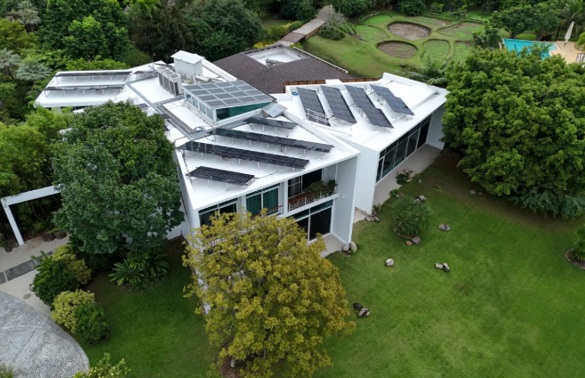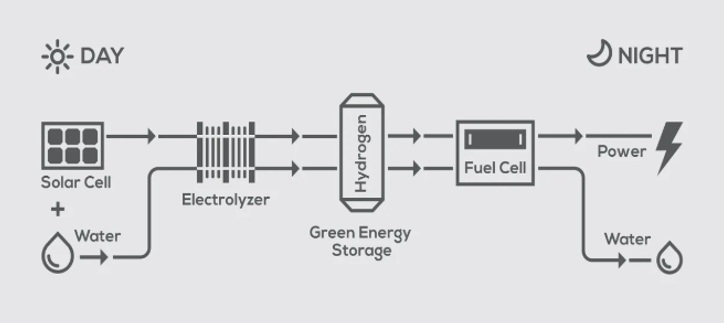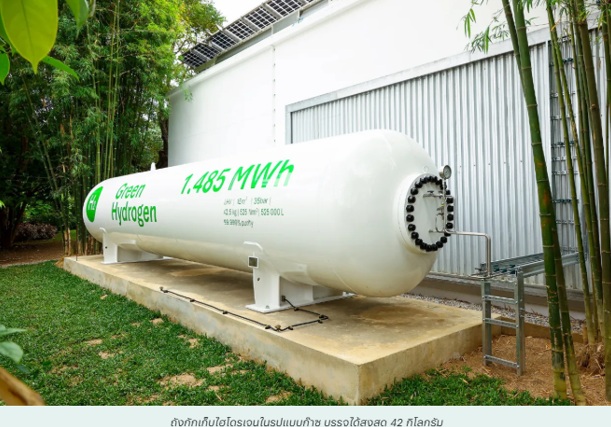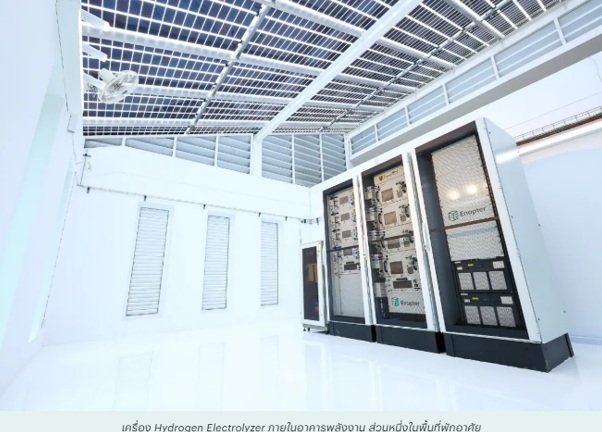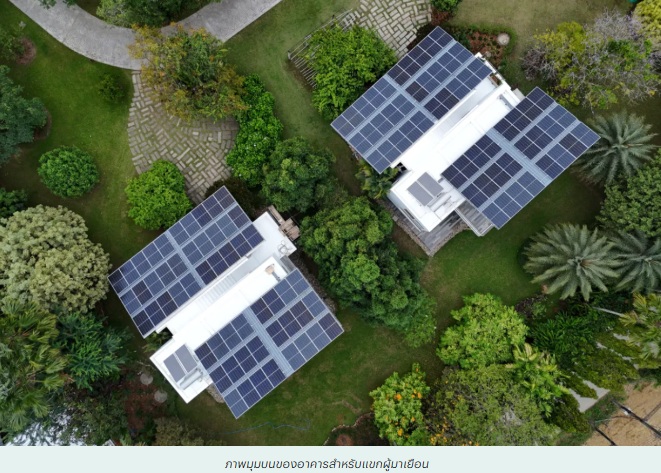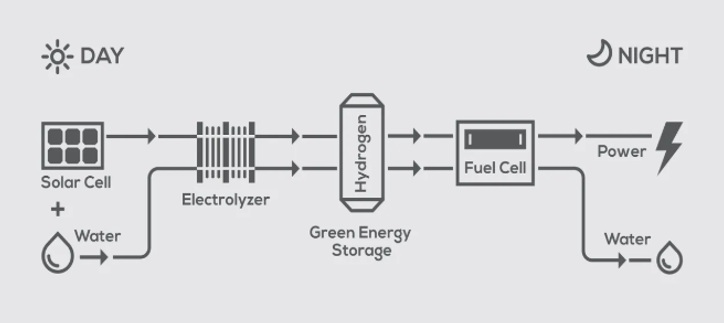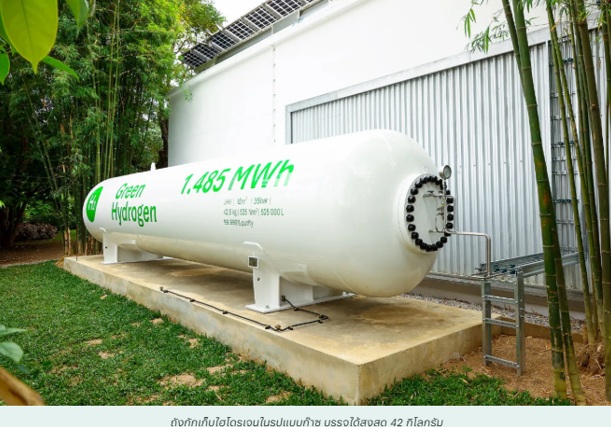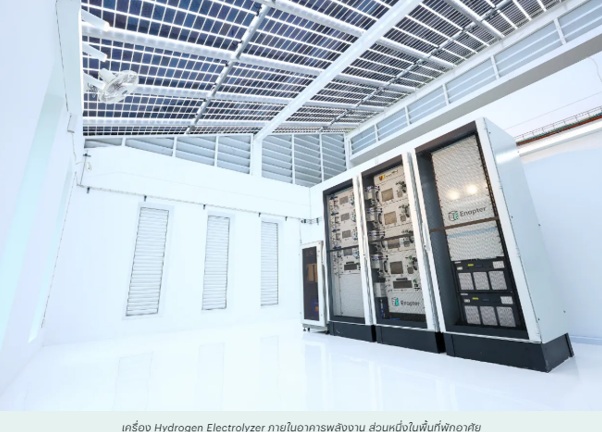“Phi Seua House”, a prototype clean energy home that produces 100% of its own electricity from solar and hydrogen.
What is “Phi Suea House”?
“Phi Suea House” is a pilot project of a residential building on an area of 18 rai that uses a hybrid solar-hydrogen energy system, which is 100% renewable energy without relying on electricity. It is considered the first residential building project in the world to integrate Green Hydrogen energy, which will use this clean energy to drive the electrical system in the house 24 hours a day.
“Phi Suea House” is a pilot project of a residential building on an area of 18 rai that uses a hybrid solar-hydrogen energy system, which is 100% renewable energy without relying on electricity. It is considered the first residential building project in the world to integrate Green Hydrogen energy, which will use this clean energy to drive the electrical system in the house 24 hours a day.
Phi Suea House is located in San Phi Suea District, Chiang Mai Province. It is the private home of the family of Sebastian-Justus Schmidt, a former German software engineer, founder of Enapter, a manufacturer of Hydrogen Electrolyzers (or AEM Electrolyser) and founder of Phi Suea House based on his passion and interest in hydrogen energy technology. Therefore, the idea was to create a sustainable self-sufficient residence. The living area will consist of a large house, a power system building, 2 guest houses, a swimming pool, a garden area, a pond, and an animal area, all of which use electricity that is self-produced.
For the past 10 years, since its establishment in 2015, Ban Phisuea has used 100% renewable energy without relying on electricity. Ban Phisuea's working system is to use solar cells to generate electricity during the day, which will be used immediately. At the same time, excess energy from the solar system combined with water (H2O) will be separated into hydrogen through an Electrolyzer before the hydrogen is stored in a tank as gas to be used to generate electricity at night. The resulting hydrogen is Green Hydrogen because it is produced from renewable energy sources such as solar power. This system does not release any waste or carbon dioxide gas. At night or during times when there is little sunlight, the stored hydrogen will be converted back into electricity using a hydrogen fuel cell system. When hydrogen combines with oxygen, it becomes electricity and water, which does not affect the environment, ensuring that clean and environmentally friendly energy is used completely.
In addition to the electricity generation system, Ban Phisuea also has a good water management system by storing and treating rainwater. To reduce dependence on external water sources, this water will be used for gardening and rice farming, to reduce the need for external food sources that often emit pollution from transportation, promote food security and reduce the overall greenhouse gas emissions of the household. The goal of creating the Butterfly House project, in addition to following Sebastian-Justus Schmidt's passion, is also an important guideline for creating future energy solutions, especially for remote areas or areas that need to be self-sufficient, such as island residences, and to be able to develop a larger model for use in large-scale developments, such as hotels.
What is "Green Hydrogen"?
An important part of the development of the Butterfly House model is the use of Green Hydrogen, which is seen as another advancement in the energy industry. First, we must understand that "hydrogen energy" (Hydrogen, H2) is divided into 3 main types: Gray Hydrogen, Blue Hydrogen and Green Hydrogen. They are separated by the type of energy source and the method of hydrogen production. For example, gray hydrogen is produced from fossil fuels such as coal, which has the same production method as blue hydrogen, but blue will store carbon dioxide gas in the ground instead of releasing it into the air, while green hydrogen It will be produced from renewable energy that is clean energy, so there are no emissions at all.
An important part of the development of the Butterfly House model is the use of Green Hydrogen, which is seen as another advancement in the energy industry. First, we must understand that "hydrogen energy" (Hydrogen, H2) is divided into 3 main types: Gray Hydrogen, Blue Hydrogen and Green Hydrogen. They are separated by the type of energy source and the method of hydrogen production. For example, gray hydrogen is produced from fossil fuels such as coal, which has the same production method as blue hydrogen, but blue will store carbon dioxide gas in the ground instead of releasing it into the air, while green hydrogen It will be produced from renewable energy that is clean energy, so there are no emissions at all.
Therefore, hydrogen is an energy that can be synthesized from various natural raw materials. When burned, it will release only water and oxygen as by-products, unlike general fuels that release carbon dioxide, which is a major cause of global warming.
Another advantage of hydrogen is that it has a higher energy value than other types of fuels. It does not cause dust or air pollution. It can also be used to replace traditional energy in many ways, such as generating electricity with fuel cells, which is an alternative that meets both cost-effectiveness and sustainability in an era where the world needs more clean energy.
Currently, hydrogen is being talked about more as an alternative energy. In addition to being used in fuel production, it has also been used in many industries, such as hydrogen-powered vehicles in the Toyota Mirai and Hyundai Nexo, to develop hydrogen-powered aircraft to reduce dependence on fossil fuels, as well as the use of liquid hydrogen as fuel for rockets in space exploration projects.
However, green hydrogen still has many limitations. Sebastian-Justus Schmidt said that the main limitation he encountered was “people’s perspectives” that still do not understand, do not believe, and do not see that using hydrogen energy is really possible. Even though today, the cost of producing green hydrogen and the cost of technology such as the Electrolyzer are still high. It requires an energy storage system and a strong infrastructure, which takes time and costs a lot. In addition, Thailand does not have enough supporting laws, which means it is not yet widespread. However, I hope that in the future
ที่มา: Thairat
